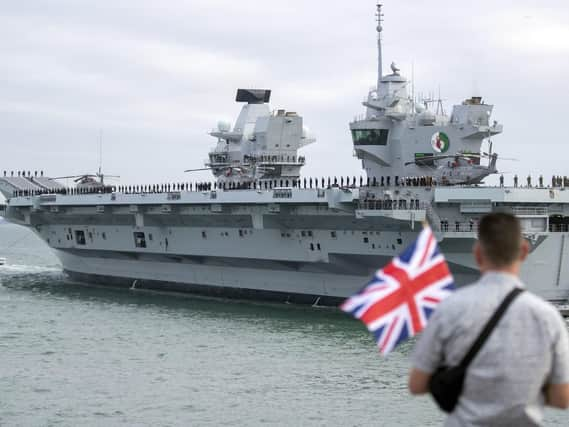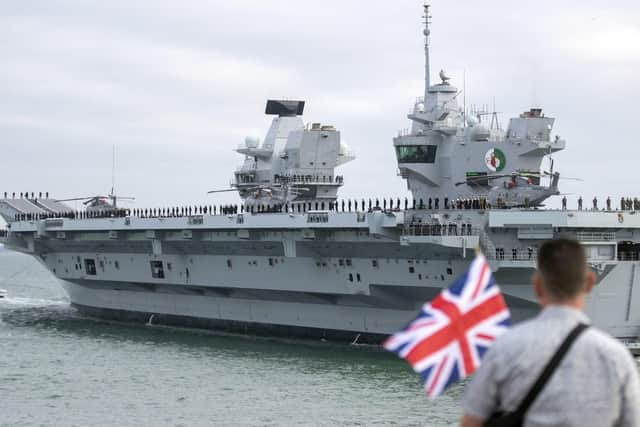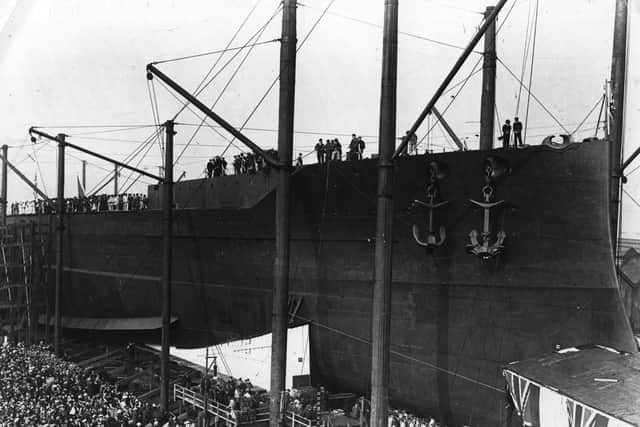HMS Queen Elizabeth: How many Royal Navy ships have had the name HMS Queen Elizabeth?


But HMS Queen Elizabeth isn’t the first ship to bare that name and she isn't actually named after the current Queen Elizabeth, but in fact named after Elizabeth I.
That Queen also lends her name to the class of ship that the £3bn aircraft carrier and her sister ship HMS Prince of Wales fallen under.
Advertisement
Hide AdAdvertisement
Hide AdHere's what you need to know about the other HMS Queen Elizabeth:


How many ships have had this name?
The current HMS Queen Elizabeth, which is set to enter active duty in 2021 with a tour of the Pacific, Middle East and Mediterranean, is the second ship to have this name.
When was the first HMS Queen Elizabeth in service?


The first HMS Queen Elizabeth, which was also named after Elizabeth I of England, was launched in 1913 in Portsmouth.
Built at Portsmouth Royal Dockyard, she was launched on October 16 of that year and played a key role in the First World War.
Advertisement
Hide AdAdvertisement
Hide AdShe was a dreadnought battleship – a class of ship that was predominant in the early 20th century, named after the HMS Dreadnought which was launched in 1906.
HMS Queen Elizabeth became the flagship for the preliminary naval operations in the Dardanelles Campaign, leading the first line of British battleships in the battle of March 18, 1915.
She was part of the Grand Fleet based at Scapa Flow but missed the Battle of Jutland because she was in dock for maintenance at the time.
Like her future successor, HMS Queen Elizabeth (1913) was often used as a flagship for the Royal Navy.
Advertisement
Hide AdAdvertisement
Hide AdREAD MORE: Royal Navy to create new strike ships as defence secretary Gavin Williamson confirms HMS Queen Elizabeth will deploy to the Pacific
Between 1919 and 1924 she was the flagship of the Atlantic Fleet.
HMS Queen Elizabeth was rebuilt twice during the interwar period and later joined the Mediterranean Fleet during the Second World War.
She was mined and seriously damaged during the raid on Alexandria by Italian frogmen in December 1941 and travelled to Norfolk, Virginia, USA for comprehensive repairs in 1942.
Advertisement
Hide AdAdvertisement
Hide AdIn 1945 HMS Queen Elizabeth took part in raids on the Japanese bases in the Dutch East Indies.
She was scrapped in July 1948.
Could there have been another HMS Queen Elizabeth?
In the 1960s the Royal Navy planned to build the CVA-01 class of aircraft carriers to replace their current fleet, which had been built before World War Two.
With the first of these planned ships due to be called HMS Queen Elizabeth – however they were never constructed.
What about HMS Elizabeth?
While not exactly the same as HMS Queen Elizabeth, there have been a number of Royal Navy ships which share the name of Elizabeth Tudor and Elizabeth Windsor.
With there being eight ships called the HMS Elizabeth from 1647 and 1807.
Including the HMS Elizabeth (1769) which served in the American War of Independence and the French Revolutionary War.
